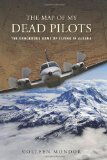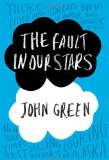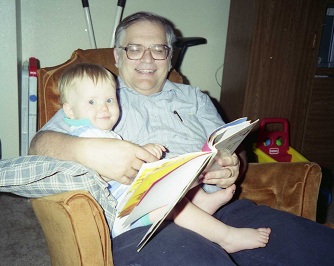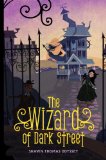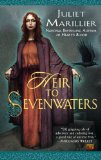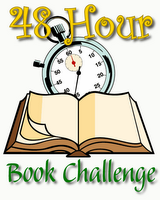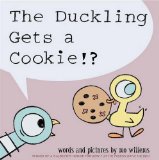Review of The Map of My Dead Pilots, by Colleen Mondor
The Dangerous Game of Flying in Alaska
by Colleen Mondor
Lyons Press, Guilford, Connecticut, 2012. 242 pages.
Starred Review
Full disclosure: Colleen Mondor is an acquaintance whom I like very much. It seems a little presumptuous to call her a friend, but I’m confident that eventually, after enough KidLitCons, we’ll be that. She hosted the last one I attended in Seattle, and I’ve definitely read her blog, Chasing Ray, many times. Today I was on her blog for an Unconventional Blog Tour, where she gave an insightful post about Bloggers and Authors. She mentioned that it’s been six months since her book came out, and it dawned on me that I really need to get her book reviewed! So watch me go! I got home from work, and I’m writing the review!
Now, I should point out that there are two main reasons I took so long to review this book, and neither one has anything to do with how much I like it (very much).
1. It is nonfiction.
2. I own it.
The reason Nonfiction slows me down is this: I learned many years ago that if I read nonfiction at bedtime, I will think about it, and I won’t be able to go to sleep. Sometimes fiction does this, but not as often as nonfiction. So I read nonfiction sitting at the table, either eating or knitting while I read. What’s more, I rotate books. I’ve got a hugely complicated rotation system. Generally, every day I read a chapter of inspirational nonfiction, one of narrative nonfiction, and one of informational nonfiction. With the other two categories, I even rotate books within categories, but I’m finding that with narrative nonfiction (like this book), I tend to stick with one book until I finish, though I usually do just read one chapter a day.
This book worked well with that method, since almost every chapter is essentially a story in itself. The chapters do work together and do have an overarching theme, but they definitely work as separate stories. And I have to say, there were many times, and more and more as the book went on, when I definitely couldn’t bring myself to stop with one chapter.
I also had an interruption in reading the book when I flew to ALA Midwinter Meeting in Dallas. This is decidedly NOT a book you want to read on an airplane or within about a week of flying on an airplane! It will not be a spoiler to say that many pilots die in this book.
The reason owning the book slowed me down is that continuing problem of it, unlike library books, not having a due date. I am getting better at putting my own books higher in the stack to be reviewed, or, well, at least I thought I was. But apparently I still have a ways to go. Because I did finish it quite some time ago.
In The Map of My Dead Pilots, Colleen Mondor tells stories from her days of working for “The Company” that had a flight business in Alaska. Her stories are eye-opening and amazing. She helps you understand how people could fudge on cargo weights in order to get the job done — with possibly life-threatening results. She talks about the many factors that sometimes lead to narrow escapes but sometimes lead to disaster. She talks about the kinds of people who end up living a life of adventure in Alaska.
The whole thing is completely fascinating. Sometimes in the way that a train wreck is fascinating — in this case, I should say the way a plane wreck is fascinating, because there are several of those. Though they don’t always find the wreckage.
Another part of the fascination is the whole look at bureaucracy and how bureaucracy so often does not lead to good decisions and how people try to get around it with bad results. I know about bureaucracy because I was an Air Force wife. I think many things said about The Company can be applied pretty easily to the military. (But these views are entirely my own and do not in any way reflect the official views of the US Air Force.)
The book reads like friends sitting around and telling yarns. Colleen admits that they don’t sound believable, so it’s a treat when she’s with someone who was there and knows it’s all true.
I’ll quote a few sections to give you the feel of the book:
Sam Beach . . . didn’t see himself as Ben Eielson, heading to Fairbanks in 1922 on his way to fame and glory as the first pilot to fly across the Arctic. By 1995 commercial flying in Alaska wasn’t really about the bush anymore; it was about commuter schedules and hauling mail and building flight time to get a jet job. But he still had that same vision of Eielson’s in his head. This time it would be different; this time the job wouldn’t go away; this time he would make it. Sam had been in aviation long enough to know what Alaska meant; it was the place where pilots were needed, where they mattered. This is my chance, he told his parents, and he said it just like Eielson did so long ago, with promises to be smart and careful and come home again soon.
He said it like he believed it, and maybe then he did. Sam believed a lot of things in the beginning, and he learned to repeat those things every time his parents called, even after he realized they were lies. And he never told them Ben Eielson crashed in 1929. And of course they never thought to ask.
Some things never do change after all.
There’s a section right at the start about things the pilots learned. Here are some bits from that:
If they were based in the Bush, flying out of a place like St. Mary’s or Aniak or Bethel or Kotzebue, then they flew with a specific set of habits. Out there it was about the snow and the ice and the wind. It was also about illusions, about pretending you could see when you couldn’t and accepting that no one else could see either. They learned to trust one another in those places, or at least to trust every sane guy and avoid the ones who were nuts. Mostly though, they just learned to hate it. . . .
Along with the words, they also had to play the game — fly when it was legal but maybe not safe, and lie when it was illegal but definitely much safer. There was physical survival, job survival, and career survival to consider. Rarely did the three converge on any flight. They had to pick and choose which was most important and fake it when they made a mistake. Some guys figured this all out in the first day with the Company, but others never got it at all.
If they were the kind to worry, there were a lot of things to be concerned about. The planes they flew were old and tired. The exteriors were patched, the interiors stained, and in a hundred different ways each of them was suffering from some sort of neglect. They were used for hauling sled dogs and snow machines as well as any other freight that fit, and they looked it. There were a lot of things that went wrong, and flying a broken airplance quickly became part of the job, just another test of loyalty in a place too cheap to do things right.
She tells sad stories, poignant stories, amazing stories, and a lot of fun stories like this one:
I can still remember Tony coming back from every single Mount McKinley sight-seeing flight and his passengers going on and on about how spectacular the mountain was to see. I ask him how come the mountain is never clouded in when he’s flying, and he laughs and says the trick isn’t finding Denali on a good day but any mountain on a bad one.
This book is hard to describe because I haven’t read too many others like it. It’s true-life adventure, but not one big saga like a trip to the South Pole. No, this is the story of people for whom life-and-death adventure becomes a matter of course, and all wrapped up in working for a Company that’s trying to make money and cutting corners to do it. Meanwhile, she talks as well about what drives the pilots today and the pilots of the past whose names are now legendary. And she makes it all fascinating.
Find this review on Sonderbooks at: www.sonderbooks.com/Nonfiction/map_of_my_dead_pilots.html
Disclosure: I am an Amazon Affiliate, and will earn a small percentage if you order a book on Amazon after clicking through from my site.
Source: This review is based on my own copy, ordered from Amazon.com.
